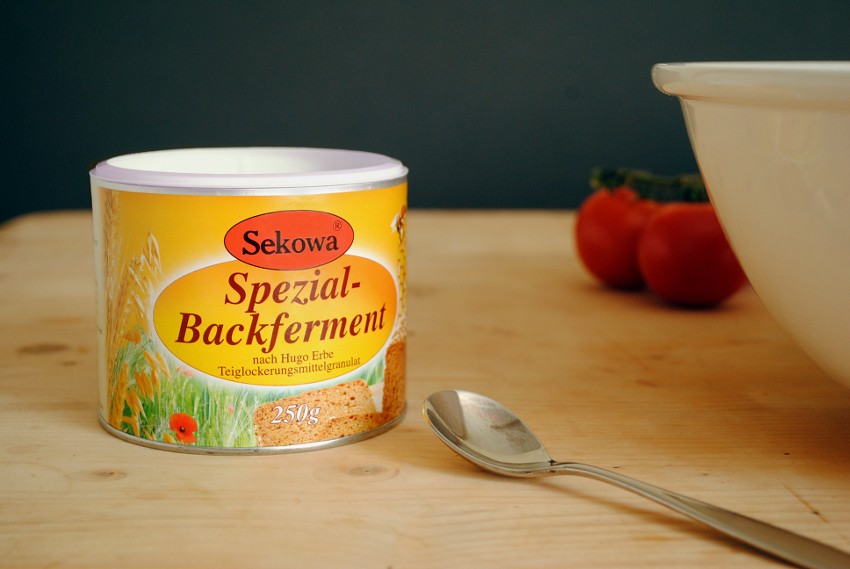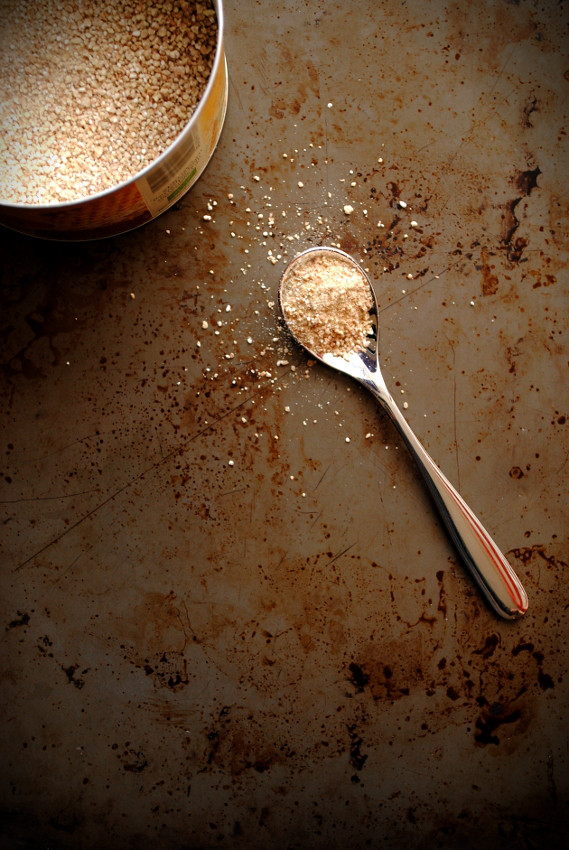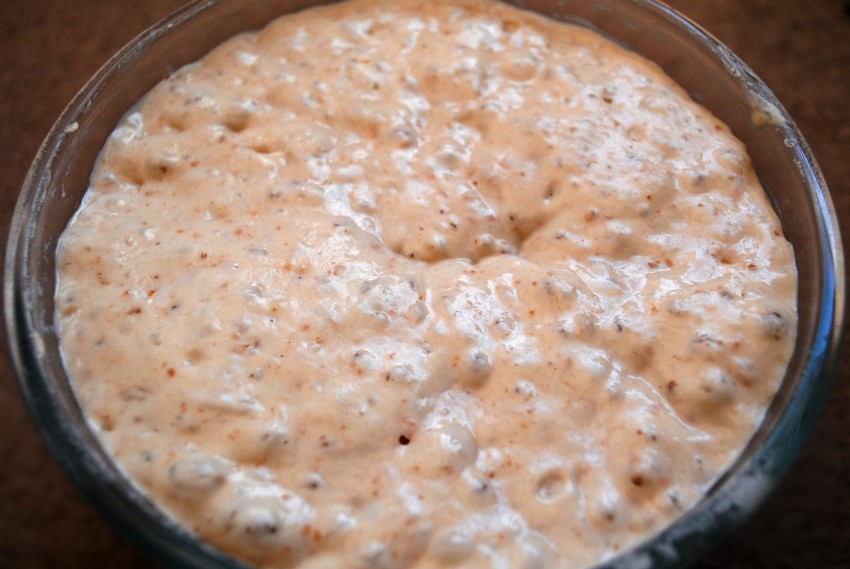Bread meets biodynamics
As I mentioned a few posts ago, I’ve been experimenting with an alternative form of yeast, Sekowa ‘Spezial-Backferment’ or ‘Special Baking Ferment’. Made from ground wheat, maize and peas and dried honey, it is a sort of dried starter culture, but not quite a sourdough. The yeast in the baking ferment comes from the honey. Bee honey naturally contains a high proportion of natural yeasts. Under the right conditions it will start to ferment and is the basis of mead, one of the earliest known alcoholic drinks.
The Special Baking Ferment was developed in the 1920s by Hugo Erbe, a German musician and baker who was interested in Rudolf Steiner‘s theories of biodynamic agriculture. Erbe owned a bakery in the German city of Ulm, which was destroyed in a bombing raid during the Second World War. It appears that Erbe didn’t return to commercial baking after the war, but he continued to develop his ideas about biodynamics and cereal production in particular. It wasn’t until the 1960s that his ferment was commercially formulated, and it is now exclusively produced by the German firm Sekowa.
The theories of biodynamics, and of Steiner and Erbe, are partly based on the very reasonable premise that food production should be sustainable and that soil, crops and livestock are interconnected parts of an ecological system. On the other hand, biodynamic agriculture incorporates elements of spiritualism and mysticism that have led its detractors to dismiss it as a pseudoscience. While Erbe’s baking ferment is certainly the byproduct of some unusual ideas, it does work, and it may be useful for bakers who don’t want to use commercial yeast but struggle to maintain a sourdough starter.
To use Special Baking Ferment, you must first make a starter. Unlike a normal sourdough starter, you will be adding natural yeasts from the ferment rather than relying on yeast in the immediate environment, so it is quicker and more reliable than creating a sourdough starter from scratch. The recipe that comes with the Sekowa ferment makes a large quantity and, although they state that the starter will keep for up to 2 months, I doubt the average baker would be able to get through it all in that time. Accordingly, I halved the amounts:
10g Special Baking Ferment granules
110g water at about 30°c
100g strong white flour
Mix the ingredients in a bowl or container, cover with a teatowel or clingfilm (or if you’re using a lidded container, place the lid loosely on top) and leave in a warm place overnight or for about 12 hours. The starter should be bubbling by this time. Now add 50g water and 150g strong white flour, mix thoroughly and leave, again in a warm place.The instructions advise 5-10 hours; I was able to keep my starter quite warm (25-30°c) and it had doubled in size within about 6 hours. The starter should be slightly wobbly and very obviously full of quite large bubbles. It is now ready for use, and can be stored in the fridge. Unlike a sourdough starter, it doesn’t need to be fed with fresh flour and water, so it is very low-maintenance.
Some claims have been made for the improved digestibility of bread made with the Special Baking Ferment, although I haven’t been able to find any scientific verification of this.
In the UK, Sekowa Special Baking Ferment is available from Bakery Bits, both in its regular form and as a gluten-free version. In my next post, I’ll look at how to use the Sekowa ferment in baking.




October 12, 2014 @ 3:01 pm
Loved your idea and receipe for making the starter with Sekowa. Would love to learn some receipes for making the bread. I am particularly interested in using spelt flour. Would that be considered too light in comparison to strong white or wholemeal flour.
Thanks in advance for any suggestions.
January 30, 2015 @ 12:04 pm
Hi Neil,
I am trying to find out how to make the backferment starter myself. , Raw honey, maize flour and rye to start ?… and I am guessing to allow it to grow much as you would a sourdough starter. Any idea or advice to help much appreciated.
Warm regards
Colette
February 1, 2015 @ 9:32 pm
Hi Colette,
I’m not aware of anyone having successfully created a Sekowa-type ferment themselves. It seems to be, essentially, a form of dried sourdough starter, but it was, as I understand it, the product of lengthy experimentation. I wasn’t that taken with the results: they weren’t bad, but a regular sourdough starter seemed to me to produce better bread, and the Sekowa ferment isn’t any easier or quicker to use. Nonetheless, I would be interested to know how your experiments turn out.
Best wishes,
Neil
November 23, 2017 @ 2:22 am
neil, the backferment makes gluten more digestible. research conducted in germany.
November 23, 2017 @ 10:33 am
I would anticipate that it would, as it is essentially a kind of sourdough, and there is published research on this effect in sourdough. I wasn’t able to find any research that looked specifically at Sekowa backferment, however. Do you know where I would be able to find the research you refer to? Many thanks!
May 22, 2023 @ 9:38 am
Where in the USA can I buy it?
I used it in 1984 in a Biodynamic Bakery in East Troy, Wisconsin. It worked!
May 22, 2023 @ 10:35 am
Hi Markus, I’m afraid I don’t know if, or where, it might be available in the USA. It might be possible to have it shipped from Europe, but I suspect the cost would be prohibitive – probably much more than the backferment itself. Sorry I can’t be more helpful!
March 7, 2025 @ 1:31 pm
Where can I buy it in the US?